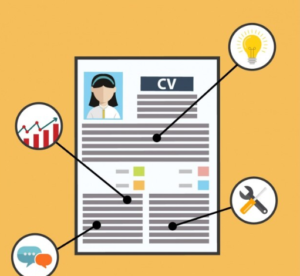Are you looking to stand out in today’s competitive job market?
With everything moving at a rapid pace, especially with advancements in technology like Artificial Intelligence (AI).
It can be challenging to know where to start when crafting your resume. But don’t worry, we’ve got you covered!
In this article, we’ll share some straightforward yet effective tips on how to design a resume that captures the attention of both AI systems and human recruiters.
What is AI and How Does It Affect Your Resume?

Well, you kept using AI but now, let’s understand what AI is.
AI stands for Artificial Intelligence, This refers to computer systems programmed to perform tasks that usually require human intelligence.
One major way AI is commonly used in the job market today is through Applicant Tracking Systems (ATS).
These systems are programmed to scan resumes, picking out keywords and information to determine whether your resume is a good fit for a job.
You get it?
This means your resume might be read by a robot before it even reaches a human!
But don’t worry, by following a few simple steps you are about to learn if your resume is AI-friendly and still impressive to human eyes.
7 Tips to Cast a Winning Resume in the Age of AI
Here are some simple but effective tips on how to create a resume that gets noticed by both AI-powered systems and real human recruiters.
-
Use the Right Keywords

Just Google, AI systems look for certain keywords to decide if your resume is a match for the job.
Meaning it’s significant to include keywords from the job description in your resume.
If the job is for a “Copywriter,” make sure to use that exact term and other related keywords like “digital marketing,” “content writing,” and “SEO.”
Make sure to read the job description carefully in order to pick out the key skills and qualifications the employer is looking for.
Also, match those keywords to your experience and skills, but only if they genuinely apply to you.
Be honest!
Finally, don’t overload your resume with too many keywords. Use them in a natural and meaningful way in your skills, experience, and achievements.
-
Keep the Layout Simple and Clean

AI and Applicant Tracking Systems (ATS) sometimes have trouble reading fancy fonts or complicated layouts.
If your resume has lots of colors, graphics, or unusual designs, it might not be read correctly by the system.
Make use of a simple, and clean layout by sticking with standard fonts like Arial, Calibri, or Times New Roman.
Do not headers, footers, and images, as these can confuse AI.
Use a bulletin to highlight your achievements and skills.
It’s easy for both AI and humans to scan.
-
Focus on Actionable Results

You see, AI might not fully understand the context of your job, but humans do.
So, when writing your resume, always focus on the impact you made in your previous roles. Instead of just listing your responsibilities, highlight what you achieved.
For example…
Instead of you saying “Responsible for managing a team,” try “Lead a team of 5 to increase sales by 20% within 6 months.”
Instead of saying “Handled customer service inquiries,” say “Resolved customer issues, leading to a 95% satisfaction rate.”
Quantifying your achievements shows real value, which is something both humans and AI love to see.
-
Tailor Your Resume for Each Job

One of the best things you can do to make your resume stand out in this recent age is to tailor it for each job you apply for.
While it may take a little extra time, customizing your resume for each specific job increases your chances of getting noticed.
Analyze the job description by looking for the specific skills and qualifications the employer is asking for.
Why not customize your resume? Make sure to highlight the skills and experience that are most relevant to that role.
AI systems will also look for how well your skills match the job description, so make sure you reflect the key elements in your resume.
-
Highlight Soft Skills and Technical Skills

Well, it seems AI can scan for technical skills and certifications, soft skills like leadership, communication, and problem-solving are equally important.
These skills show how you interact with others and solve real-world problems, which is significant for most roles.
Showcase both technical and soft skills to balance your resume.
Although AI might not fully grasp soft skills, human recruiters will be able to tell if you have the right qualities for the job. Trending keyword: soft skills on resume.
-
Include a Summary or Objective Statement

A summary or objective statement at the top of your resume can help both recruiters and AI systems quickly understand who you are and what you’re looking for.
A brief summary of your career achievements or goals, your top skills and what you bring to the table and also your career objectives if you’re shifting industries or looking for specific opportunities.
This section helps guide both human readers and AI systems in the right direction, making it easier for them to spot what’s important.
-
Don’t Forget to Proofread

No matter how great your resume is, typos or grammatical mistakes can hurt your chances. Recruiter or even AI systems may not catch errors, but human recruiters certainly will.
Conclusion
Now you know that creating a winning resume in the age of AI doesn’t have to be complicated.
By focusing on the right things, you can create a resume that stands out to both AI systems and hiring managers.
Don’t forget to tailor your resume to each job you apply for, and always highlight your achievements in a way that shows the real value you bring.
If you’re feeling stuck or unsure about your career path, Talent Builder is here to help. Contact us today and let’s get started.
So, take these tips, create a winning resume, and take control of your career today!




